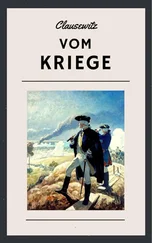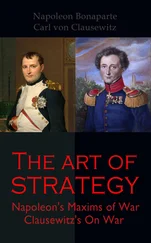A touch-stone with soft and shining splendour is the best. The touch-stone of the Kálinga country with the colour of green beans is also the best. A touch-stone of even or uniform colour is good in sale or purchase (of gold). That which possesses the colour of an elephant, tinged with green colour and capable of reflecting light (pratirági) is good in selling gold. That which is hard, durable, and of uneven colour and not reflecting light, is good for purchasers (krayahitah). That which is grey, greasy, of uniform colour, soft, and glossy is the best.
That (gold) which, when heated, keeps the same colour (tápo bahirantascha samah), is as glittering as tender sprouts, or of the colour of the flower of kárandaka (?) is the best.
That which is black or blue (in gold) is the impurity (apráptaka).
We shall deal with the balance and weights under the "Superintendent of Weights and Measures" (Chap. XIX, Book II). In accordance with the instructions given thereunder silver and gold (rúpyasuvarnam) may be given in exchange.
No person who is not an employee shall enter the gold-smiths’ office. Any person who so enters shall be beheaded (uchchhedyah).
Any workman who enters the office with gold or silver shall have to forfeit the same.
Goldsmiths who are engaged to prepare various kinds of ornaments such as kánchana (pure gold), prishita (hollow ornaments), tvashtri (setting gems in gold) and tapaníya; as well as blowers and sweepers shall enter into or exit from the office after their person and dress are thoroughly examined. All of their instruments together with their unfinished work shall be left where they have been at work. That amount of gold which they have received and the ornamental work which they were doing shall be put in the centre of the office. (Finished articles) shall be examined both morning and evening and be locked up with the seal of both the manufacturer and the superintendent (kárayatri, the owner getting the articles prepared).
Kshepana, guna, and kshudra ate three kinds of ornamental work.
Setting jewels (kácha, glass bead) in gold is termed kshepana.
Thread-making or string making is called guna.
Solid work (ghana), hollow work (sushira), and the manufacture of globules furnished with a rounded orifice is what is termed kshudra, low or ordinary work.
For setting jewels in gold, five parts of káñchana (pure gold) and ten parts of gold alloyed with four parts of copper or silver shall be the required quantity (mána). Here the pure gold shall be preserved from the impure gold.
For setting jewels in hollow ornaments (prishitakácha karmanah), three parts of gold to hold the jewel and four parts for the bottom (shall be the required quantity).
For the work of tvashtri, copper and gold shall be mixed in equal quantities.
For silver article either solid or hollow, silver may be mixed with half of the amount of gold; or by making use of the powder or solution of vermilion, gold equal to one-fourth the amount of silver of the ornament may be painted (vásayet) on it.
Pure and glittering gold is tapaníya. This combined with an equal quantity of lead and heated with rock-salt (saindhav'ika) to melting point under dry cowdung becomes the basis of gold alloys of blue, red, white, yellow (harita), parrot and pidgeon colours.
The colouring ingredient of gold is one kákaní of tíkshna which is of the colour of the neck of a peacock, tinged with white, and which is dazzling and full of copper (pitapúrnitam).
Pure or impure silver (tára) may be heated four times with asthituttha (copper sulphate mixed with powdered bone), again four times with an equal quantity of lead, again four times with dry copper sulphate (sushkatuttha) again three times in skull (kapála), and lastly twice in cowdung. Thus the silver acted upon seventeen times by tuttha (shodasatutthátikrántam) and lastly heated to white light with rock salt may be made to alloy with suvarna to the extent of from one kákani to two Máshas. Then the suvarna attains white colour and is called sveta-tára.
When three parts of tapaníya (pure gold) are melted with thirty-two parts of sveta-tára, the compound becomes reddish white (svetalohitakam). When three parts of tapaníya are combined with thirty-two parts of copper, the compound becomes yellow (píta, red!). Also when three parts of the colouring ingredient (rágatribhága, i.e., tíkshna referred to above) are heated with tapaníya, the compound becomes yellowish red (píta). When two parts of sveta-tára and one part of tapaníya are heated, the whole mass becomes as green as mudga (Phraseolus Mungo). When tapaníya is drenched in a solution of half the quantity of black iron (káláyasa), it becomes black.
When tapaníya is twice drenched in (the above) solution mixed with mercury (rasa), it acquires the colour of the feathers of a parrot.
Before these varieties of gold are put to use, their test streak shall be taken on touch-stone. The process of assaying tíkshna and copper shall be well understood. Hence the various counterweights (avaneyimána) used in weighing diamonds, rubies, pearls, corals, and coins, (rúpa), as well as the proportional amount of gold and silver necessary for various kinds of ornaments can be well understood.
Uniform in colour, equal in the colour of test streak to the standard gold, devoid of hollow bulbs, ductile (sthira), very smooth, free from alloys, pleasing when worn as an ornament, not dazzling though glittering, sweet in its uniformity of mass, and pleasing the mind and eyes,---these are the qualities of tapaníya, pure gold.
[Thus ends Chapter XIII, "The Superintendent of Gold in the Goldsmiths' Office," in Book II, "The Duties of Government Superintendents" of the Arthasástra of Kautilya. End of thirty-fourth chapter from the beginning.]
CHAPTER XIV. THE DUTIES OF THE STATE GOLDSMITH IN THE HIGH ROAD.
Table of Contents
THE State Goldsmith shall employ artisans to manufacture gold and silver coins (rúpyasuvarna) from the bullion of citizens and country people.
The artisans employed in the office shall do their work as ordered and in time. When under the excuse that time and nature of the work has not been prescribed, they spoil the work, they shall not only forfeit their wages, but also pay a fine of twice the amount of their wages. When they postpone work, they shall forfeit one-fourth the amount of their wages and pay a fine of twice the amount of the forfeited wages.
(The goldsmith of the mint) shall return (to the owners coins or ornaments) of the same weight, and of the same quality (varna) as that of the bullion (nikshepa) which they received (at the mint). With the exception of those (coins) which have been worn out or which have undergone diminution (kshínaparisírna), they shall receive the same coins (back into the mint) even after the lapse of a number of years.
The state goldsmith shall gather from the artisans employed in the mint information concerning pure gold, metallic mass (pudgala), coins (lakshana), and rate of exchange (prayóga).
In getting a suvarna coin (of 16 máshas) manufactured from gold or from silver, one kákani (one-fourth másha) weight of the metal more shall be given to the mint towards the loss in manufacture.
The colouring ingredient (rágaprakshépa) shall be two kákanis of tíkshna (copper sulphate?) one-sixth of which will be lost during the manufacture.
When the quality (varna) of a coin less than the standard of a másha is lowered, the artisans (concerned) shall be punished with the first amercement. When its weight is less than the standard weight, they shall be punished with the middlemost amercement. Deception in balance or weights shall be punished with the highest amercement. Deception in the exchange of manufactured coins (kritabhándopadhau) shall also be punished with the highest amercement.
Читать дальше












